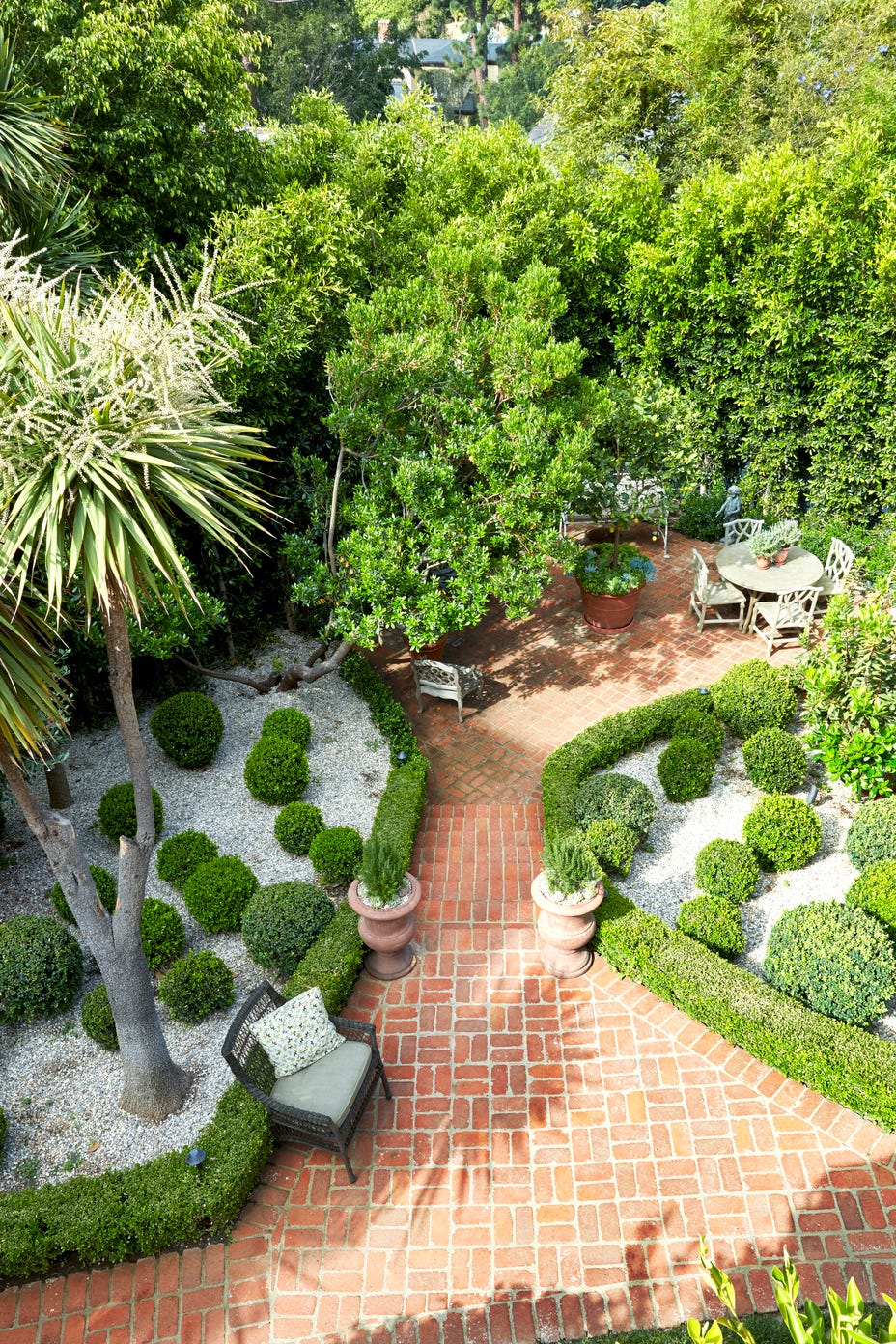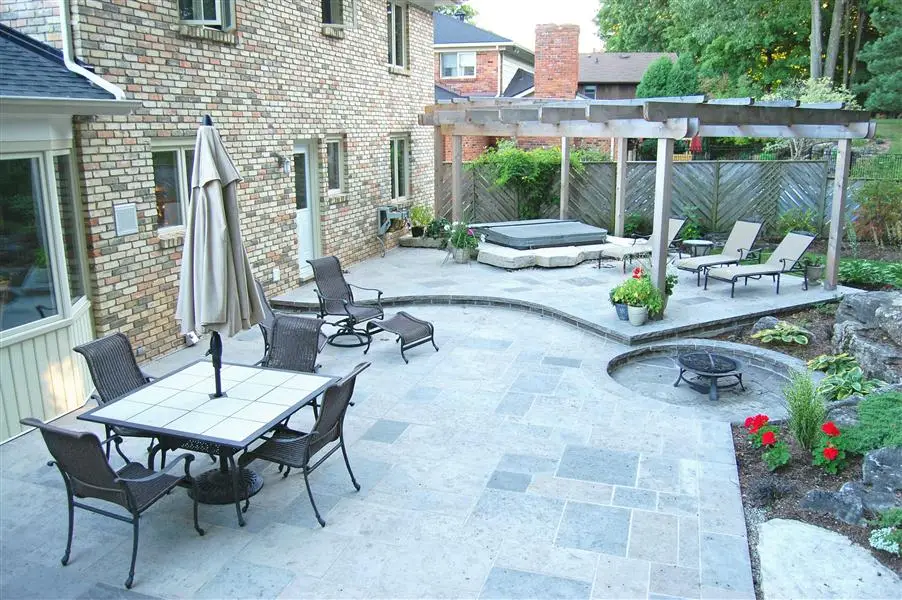What to Consider When Planning Your Dream Custom Patios
Transform Your Room With Specialist Outdoor Landscape Design Solutions: From Patios to Outdoor Kitchens
Changing exterior rooms needs competence and careful planning. Expert landscaping services can elevate a residential property's performance and aesthetics. From making inviting patios to crafting totally equipped exterior cooking areas, these professionals bring useful knowledge. They contemplate local climates and sustainable practices, making certain each project straightens with the home owner's vision. What are the key components to consider when starting such a change? The answers could shock you.
The Benefits of Specialist Outside Landscape Design

Creating Your Perfect Patio Area
When preparing the perfect patio area, property owners need to review both performance and appearances to develop a room that matches their way of living. A properly designed patio acts as an extension of the home, offering an excellent location for leisure, amusement, or dining outdoors. Trick factors to contemplate include the shapes and size of the outdoor patio, which need to integrate with the surrounding landscape and home architecture.Material selection is also crucial; choices such as natural rock, pavers, or wood can boost the total look while supplying toughness. House owners should believe concerning furnishings arrangement, guaranteeing adequate room for movement and comfort. Integrating aspects like shade structures, fire pits, or planters can add character and utility.Lighting plays a significant role in outdoor patio design, improving ambiance and usability throughout nights. Inevitably, an attentively made patio can raise outdoor living experiences and enhance building worth.
Producing an Outdoor Cooking Area
Developing an outside kitchen boosts the performance and pleasure of any type of exterior area. Trick features, such as grills, countertops, and storage space, play an important role in the layout and format of this cooking haven. By considering vital components, house owners can craft a space that effortlessly mixes with their landscape while satisfying their cooking requirements.
Crucial Kitchen Attributes
An exterior kitchen area can change a backyard into a cooking haven, improving both functionality and social communication. Crucial kitchen area attributes consist of a durable grill, which acts as the centerpiece for exterior food preparation, permitting different cooking styles. Counter room is crucial, supplying ample room for cooking and offering. A sink is additionally necessary, making it possible for very easy clean-up and assisting in cooking jobs. In addition, incorporating a fridge guarantees components and beverages remain fresh and accessible. Storage space services, such as cupboards or shelves, aid preserve organization and effectiveness. Incorporating weather-resistant materials ensures long life and longevity, making the outside kitchen area a trustworthy space year-round. With each other, these attributes produce an inviting environment for family members celebrations and entertaining visitors.
Layout and Layout Tips
While making an exterior kitchen, careful thought of the layout can greatly enhance both functionality and looks. Sod replacement Toronto. A reliable format begins with zoning, separating the room into food preparation, dining, and preparation areas. Positioning the grill near the food preparation area improves the cooking process, while guaranteeing adequate counter area for dish assembly is important. Including an eating area that enables for simple motion encourages social communication. Furthermore, integrating storage remedies such as closets and drawers maintains the room organized. It is necessary to reflect on the circulation of foot website traffic, avoiding blockage by preserving clear pathways. Using long lasting materials that hold up against outside problems assurances longevity, while thoughtful illumination can produce an inviting setting for night gatherings.
Enhancing Curb Appeal With Landscape Design
Enhancing aesthetic allure with landscape design includes a careful equilibrium of style elements that draw interest and develop a welcoming atmosphere. Strategic plant placement can highlight architectural functions, while thoughtful hardscaping adds framework and impact. With each other, these elements transform the exterior of a property, making a lasting impression on visitors and passersby.
Layout Components That Astound
Involving style components play an important function in boosting a residential property's visual appeal, as they produce a welcoming very first perception for visitors and passersby alike. Thoughtfully designed functions, such as ornamental paths, sophisticated fence, and lively flower beds, add to a cohesive visual. Distinct centerpieces, like a fashionable water feature or a striking sculpture, can attract focus and stimulate rate of interest. In addition, well-placed outside lights not just brightens pathways yet also highlights architectural details throughout the night. Incorporating multi-level landscapes with varying appearances and colors includes depth and dimension, producing a vibrant aesthetic experience. Inevitably, these captivating design components function sympathetically to boost the total beauty of a residential property, making it attract attention in the neighborhood.
Strategic Plant Positioning
Strategic plant positioning greatly influences a residential or commercial property's visual appeal, complementing the fascinating style elements already in location. By thoughtfully picking and positioning plants, property owners can develop a harmonious mix of shade, appearance, and height that draws the eye. For example, putting taller plants towards the back and much shorter ones ahead develops deepness. In addition, utilizing native plants can improve the landscape's sustainability while supplying seasonal rate of interest. Vivid flowers can be intentionally positioned near paths or entries to invite visitors, while evergreen shrubs use year-round structure. Integrating seasonal flowers assurances recurring visual allure. In general, tactical plant plans not only elevate aesthetic appeals but additionally add to a welcoming ambience that mirrors the property owner's design and enhances the overall residential property value.
Hardscaping for Impact
While plants play a vital duty in landscaping, hardscaping elements can greatly elevate a residential or commercial property's visual allure by giving framework and visual interest. Attributes such as rock paths, brick outdoor patios, and attractive wall surfaces create a solid structure that matches greenery. These elements not only specify areas but also guide site visitors through the landscape, boosting the overall experience. In addition, incorporating outdoor lighting into hardscaping can highlight building information and develop a cozy, inviting atmosphere throughout the night. Fire pits and outside kitchens add performance, making exterior areas extra comfortable and attractive. By mixing hardscaping with soft landscape design, homeowners can achieve a harmonious equilibrium that captivates the eye and increases residential property worth. Eventually, thoughtful hardscaping transforms exterior spaces read the article right into spectacular displays.
Picking the Right Plants and Materials
When choosing plants and products for outdoor landscaping, it is important to contemplate variables such as climate, soil conditions, and meant use the her response space. An effective landscape layout balances with the native environment, making sure that chosen plants grow and add to the overall aesthetic. Regional climate influences the option of vegetation; for circumstances, drought-resistant ranges are preferable in deserts, while rich greenery fits a lot more temperate climates.Soil quality also plays a considerable role in plant health and wellness. Performing dirt examinations can help figure out pH levels and vitamins and mineral content, assisting the selection of appropriate plant types. Additionally, the designated usage of the area-- be it for leisure, enjoyable, or horticulture-- will influence options pertaining to plants and products. Resilient, weather-resistant products are crucial for hardscaping components like outdoor patios and walkways, while choosing plants that offer year-round interest enhances the landscape's charm throughout the seasons.
Sustainable Landscape Design Practices
Lasting landscape design methods concentrate on developing outdoor spaces that are environmentally accountable and resource-efficient throughout their life process. These methods stress making use of native plants, which need less water and maintenance, thus promoting biodiversity and lowering dependence on chemical fertilizers and pesticides. Rain gardens and permeable paving are commonly implemented to handle stormwater runoff, enhancing groundwater recharge and lessening flooding risks.Additionally, lasting landscaping incorporates composting and natural mulch to improve soil health, lowering the need for synthetic soil amendments (Sod replacement Toronto). Reliable watering systems, such as drip irrigation, are developed to conserve water while making certain plants get sufficient hydration.Moreover, using recovered products for hardscaping elements lessens waste and urges a circular economy. Via these methods, lasting landscape design not only boosts visual appeal but also promotes eco-friendly equilibrium, adding to much healthier atmospheres for both neighborhoods and wild animals

Upkeep Tips for a Long-term Landscape
To guarantee a landscape stays dynamic and healthy and balanced with time, routine upkeep is important. Home owners need to focus on watering, making sure plants get appropriate hydration, specifically during completely dry spells. Mulching around plants not only conserves dampness but also reduces weeds and manages soil temperature. Normal trimming of hedges and trees promotes healthy growth and enhances aesthetics.Moreover, yard care is crucial; cutting at the proper elevation and freshening dirt can boost wellness and resilience. Fertilizing plants properly, based upon dirt tests, sustains nutrient requirements and fosters durable development. Additionally, insect management should be positive, using integrated bug administration methods to reduce damages without harming helpful insects.Seasonal clean-ups, consisting of fallen leave elimination and debris clearance, assistance keep an arranged look. Ultimately, routine assessments for indications of illness important site or distress assurance prompt interventions, guarding the landscape's charm and long life. Following these upkeep suggestions will certainly lead to a flourishing, long-term outside setting.

Often Asked Concerns
The length of time Does the Landscape Design Process Normally Take?
The landscaping procedure commonly differs in duration depending upon project scope and complexity. Smaller sized tasks may take a couple of days, while bigger transformations can extend several weeks to months, making sure meticulous focus to information and quality.
What Is the Typical Expense of Outdoor Landscape Design Services?
The average cost of outdoor landscaping solutions varies widely, normally varying from $1,000 to $10,000. Factors affecting this price consist of project size, materials used, and the intricacy of the layout and installation procedures.
Do I Required a License for Outdoor Landscape Design Projects?
Figuring out whether a permit is needed for exterior landscaping projects differs by location and task range. Sod replacement Toronto. Homeowners should seek advice from regional policies and zoning regulations to guarantee compliance prior to beginning any landscaping job
Can Landscaping Solutions Assist With Drainage Issues?
Landscaping services can properly deal with drainage issues by examining the site and executing solutions such as correct grading, installment of water drainage systems, and the usage of appropriate plants to take care of water overflow efficiently.
What Types of Warranties Are Used on Landscaping Job?
The sorts of guarantees supplied on landscaping job can differ considerably. Frequently, they consist of insurance coverage for plant health, products, and handiwork, typically lasting from one to several years, depending on the solution supplier's policies and warranties.